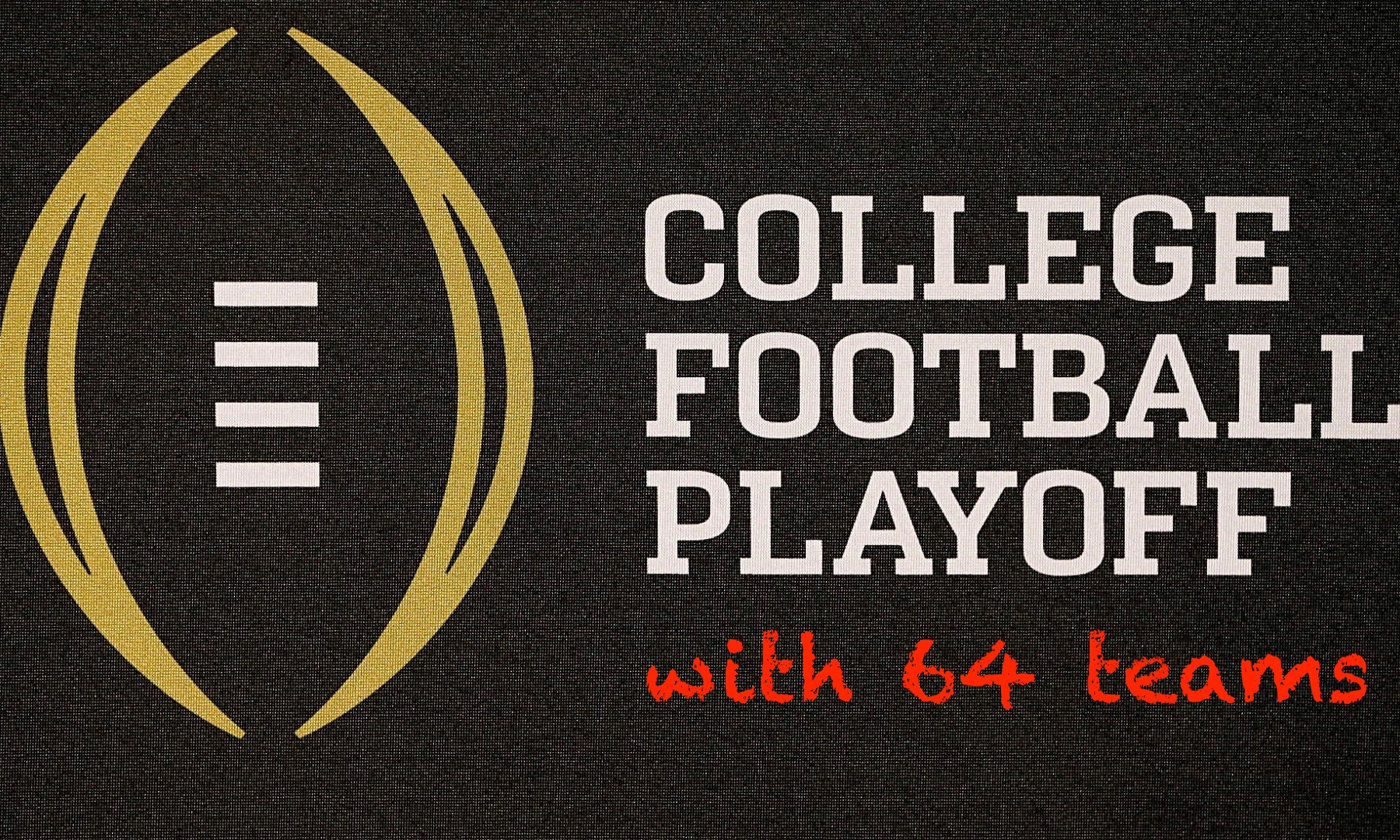Here at Student Union, we are big thinkers. Your vanilla sports blog is probably debating who should be in the four team playoff as we speak, or maybe even getting wild and crazy with a six-team or eight-team format. Spare me those warm takes, please.
If you buy the theory that the NCAA is acting out of pure greed at all times and will thus continue to expand the playoff to rake in television money, we could be a few decades away from looking at the gold standard of sports tournaments — the 64 team bracket that makes March Madness so much fun. If you don’t see the NCAA that way, or even if you do, this idea probably seems far-fetched. But that doesn’t mean it isn’t fun to imagine, which is what I plan to do over the next five weeks right here on studentunionsports.com.
Here’s how it’s going to work.
After the conference championship games this weekend, I will put out a 64 team bracket, seeded just like in basketball — 4 regions, seeded 1 to 16. No “first four” garbage in this tournament. The selection committee? Well, it’s actually just me! Only bowl eligible teams will be considered for the tournament, but given that there are currently 79 bowl eligible teams (New Mexico State, Florida State and Louisiana can all become eligible with wins this weekend), some will be left out. Mercifully, there will be no 5-win teams playing in bowls this year, so six wins is the cutoff for consideration.
For deciding which bowl eligible teams are left out and the seeding of the teams included, I will stick closely to the criteria used by the actual CFP committee: strength of schedule, conference championships, head-to-head and comparative outcomes of common opponents. You may hate these criteria because you think they are arbitrary, but of course they are, which is why they’re perfect for an imaginary 64-team football tournament decided by an online simulator. If you are upset with my selections/seeding, that will put me right in line with the actual CFP/NCAA tournament selection committees.
Which brings me to NCAAgamesim, which I will be using to simulate the tournament round-by-round. If you go play around on the site (which is an excellent time waster, I will add), you can get a quick idea of how it will work.
If you pick a game to simulate, it will spit out a score with individual statistics from that matchup, along with more general results from repeated simulations. As you can see above, Army won the single matchup, despite the fact that Navy won a majority of the repeated simulations. For the purposes of this tournament, I will be using the single score to determine which team advances. Not only will this allow for statistical breakdowns of these hypothetical matchups, but it decreases the likelihood that the tournament will be chalk all the way through, which is boring. Sorry, Navy fans.
That being said, the single score simulations are pretty accurate. I simulated all of last weekend’s games and found that the simulated outcome correctly predicted the on-the-field results 65% of the time. In Vegas, 65% makes you a God among men. It seemed to miss on some “toss-up” games (Alabama-Auburn, Fresno State-Boise State, Cincinnati-UConn), but had a pretty accurate measure of margin between uneven teams — it predicted a 58-0 win for Oregon over Oregon State and a 64-0 win for Oklahoma State against Kansas. The website also boasts that it has done well predicting previous NCAA basketball tournaments.
One final quirk that should be mentioned — the website accounts for up-to-date injuries.
Here, the simulation is done with teams who played rivalry week without their starting quarterbacks. If Wyoming is somehow alive in the tournament with backup Nick Smith (unlikely), and Josh Allen returns from injury for the real bowl game, the website will return Allen to the simulations. On the other hand, Nick Fitzgerald will not return for the real life Bulldogs, and thus will not be available for any part of the tournament.
The schedule for the tournament can be found below. I hope you’ll join me on what is sure to be a wild ride.
December 4 – selection Monday
December 8 – West region first round
December 11 – Midwest region first round
December 15 – East region first round
December 18 – South region first round
December 22 – West/Midwest regions second round
December 26 – East/South regions second round
December 29 – Sweet 16
January 1 – Elite Eight
January 5 – semifinals
January 8 – National Championship







